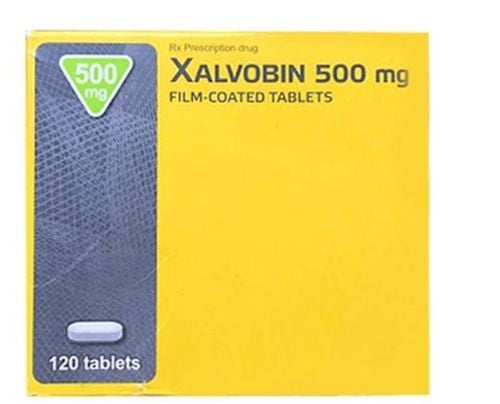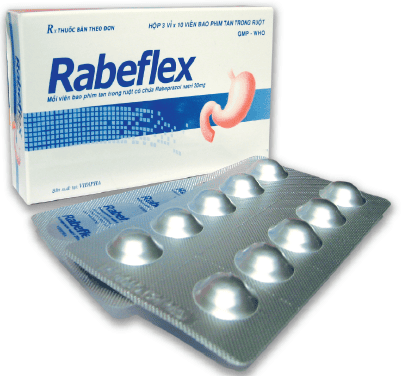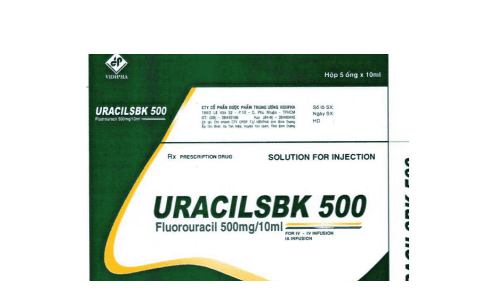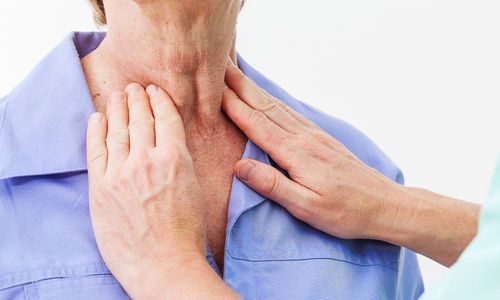This is an automatically translated article.
Posted by Master, Doctor Mai Vien Phuong - Department of Examination & Internal Medicine - Vinmec Central Park International General Hospital
Esophageal cancer is the 8th most common cancer in the world and has the poorest prognosis because when clinically detected, the tumor is often at an advanced stage.
4. Iran
Iran, a country with different ethnic groups, has one of the highest prevalence rates of esophageal cancer. The high prevalence of the disease in particular in the North of the country presents an opportunity as well as a challenge to understand the pathogenesis of the disease and possible preventive measures. Esophageal cancer is now only the 6th most frequent malignancy in Iranian men, down from 2nd and 4th in women, down from 3rd. In a survey by the Iranian Cancer Institute, 9 % of cancers and 27% of gastrointestinal cancers are esophageal. Squamous cell carcinoma is the most common, accounting for 90% of cases. The age-adjusted incidence of squamous cell carcinoma in the province of Golestan and further east is among the highest for any single cancer that has been reported worldwide. . The infamous Asian Esophageal Cancer Belt extends eastward from the Caspian coast in Iran through Turkmenistan to the northern provinces of China. Other regions of Iran have rates of esophageal cancer varying from 3 to 15 cases per 100,000 population.
The exact cause of this high incidence is speculation. Commonly suspected of consuming flour, exposure to residue from opium pipes, drinking hot tea and chewing NASS (a mixture of tobacco, minced lime and other ingredients). Family history of esophageal cancer, low socioeconomic status, and malnutrition are additional factors of suspicion. Investigating the association between tea drinking habits in Golestan and the risk of esophageal cancer, Islami et al. noted that nearly 98% of the study group drank black tea more than 1 liter per day and 39% drank tea at room temperature. degrees <60 degrees Celsius, 38.9 at 60-64 and 22% at higher temperatures. Drinking tea that is too hot has been linked to an increased risk of esophageal cancer. The high prevalence of Human Papilloma virus DNA in different anatomical sites of squamous cell carcinoma patients from the Mazandaran region of northern Iran suggests a role for HPV.
5. China
China is one of the countries with the highest incidence of esophageal cancer in the world with a very high mortality rate. The age-standardized mortality rate decreased by 41.6% between 1973 and 2005. Esophageal cancer was the 4th most common cause of cancer death with a crude mortality rate for 2004-2005. 2005 was 15.2/100,000, accounting for 11.2% of all cancer deaths. The age-standardized mortality rate of esophageal cancer per 100,000 people in China is 18.1 for men and 8.2 for women in China, compared with 8.5 and 3.4 in the world, 4 ,9 and 1.0 in the United States for men and women, respectively. China is a large country, with great geographical variation in the incidence of the disease. The six high-risk areas include Cixian and Shexian in Hebei province, Linzhou in Henan province, Yangcheng in Shanxi province, Nan'ao in Guangdong province and Yanting in Sichuan province. Large cities such as Shanghai and Beijing have seen a greater decrease in esophageal cancer incidence over the past few decades, when compared to rural areas such as Cixian. According to cancer registry data in Shanghai, the incidence of esophageal cancer has decreased significantly, 59%, from 1975 to 1988. The current ASR of esophageal cancer in China is 6.7/100,000 .
Smoking, alcoholism, and low fruit and vegetable intake are responsible for 46% of the mortality from esophageal cancer (87,065 deaths) and the incidence in 2005. About 17.9% Esophageal cancer deaths in men and 1.9% in women are attributable to smoking, approximately 15.2% of esophageal cancer deaths in men and 1.3% in women are attributable to oral alcohol, and 4.3% of deaths from esophageal cancer in men and 4.1% in women due to a low vegetable intake. The mortality rate from esophageal cancer due to low fruit intake was 27.1% in men and 28.0% in women. However, several other epidemiological studies conducted in high-risk areas contradict the above and have shown that smoking and alcohol consumption play a much lesser role in the etiology of the disease. stomach cancer .

In high-risk areas, with endoscopic and cytological screening, pre-existing lesions such as dysplasia can be detected in asymptomatic individuals with early-stage cancer. Squamous dysplasia is strongly associated with squamous cell carcinoma risk; relative risk (RR) was 28.3 for those with severe dysplasia compared with the general population. A map of China is provided showing high-risk areas for esophageal cancer. In Linxian Province, general malnutrition and deficiencies in selenium, zinc, folate, ribo alvin, and vitamins A, C, E, and B12, were associated with an increased risk of squamous cell carcinoma. Environmental carcinogens have been found in high concentrations of nitrates and nitrites, precursors of nitrosamines, in drinking water samples, and nitrosamines in food samples. High nitrate nitrate concentrations in well water correlated with incidence of squamous cell carcinoma in two studies.
There is no significant increase in the risk of squamous cell carcinoma in people infected with H. pylori. Drinking tea at high temperatures was unlikely to increase the risk of esophageal cancer, after adjusting for confounding factors, including alcohol consumption and smoking. Human papillomavirus (HPV) infection, and especially HPV 16/18 E6/E7 virus, with genetic mutations and associated p53 overexpression, may contribute to the incidence of carcinoma Very high squamous cell count was observed in Xingjian.
6. Japan
Esophageal cancer is the 12th most common malignancy and the 9th most common cause of cancer death in Japan, with an estimated 19683 new cases and 12440 deaths in 2012 Squamous cell carcinoma is still the predominant disease with the rate of adenocarcinoma not increasing sharply. The age-adjusted incidence (per 100,000 population) increased from 8.3 to 11.7 between 1975–2006 in men but changed little in women, who have an estimated prevalence of 1. ,5 during that period.
Alcohol consumption and smoking are the two major risk factors for esophageal cancer with the current prevalence of alcohol consumption at 36.4% in men and 6.9% in women and smoking at 38.2% in men and 10.9% in women. Alcoholics had a 3.3-fold increased risk compared with non-alcoholics, and there was also a dose-response relationship between the amount of alcohol consumed, the frequency of consumption, and the risk of squamous cell carcinoma. . In a study of genetic polymorphisms of alcohol-aldehyde dehydrogenase and glutathione S-transferase M1 and alcohol consumption, it was clear that alcohol drinkers with a heterozygous ALDH* 1/2 have an increased risk of developing carcinoma squamous cell tissue increased significantly. Both smokers and drinkers have a 100-fold increased risk of developing squamous cell carcinoma linked to genetic risk- ADH1B and ALDh3. Genetic polymorphisms in alcohol metabolism genes, DNA repair genes and folate metabolism genes are associated with squamous cell carcinoma risk.
The association between diet or dietary habits and squamous cell carcinoma risk is inconclusive. A prospective study based on the Japan Center for Public Health examined the relationship of fruit and vegetable intake with squamous cell carcinoma and found that a 100-gram daily increase in total fruit plants and vegetables were associated with an 11% reduction in the incidence of squamous cell carcinoma. Interestingly, the study did not show any risk of squamous cell carcinoma from eating pickled vegetables. An inverse association between yogurt intake and squamous cell carcinoma was found and also shown with adenocarcinoma in a previous European study. A strong, positive association between gastric atrophy and squamous cell carcinoma risk was shown in three studies. Interestingly, there are no studies on the association between Helicobacter pylori and squamous cell carcinoma in the Japanese population.

7. India
In India, a country with diverse populations and lifestyles, rates of esophageal cancer vary from region to region and squamous cell carcinoma is the predominant type (Table 4). The estimated 2012 incidence of esophageal cancer was 41774 with an ASR of 4.1/100,000 in both sexes with a higher incidence in men (ASR=5.4/100,000). The expected incidence in 2015 is 59420 (35513 in men and 23907 in women. The highest rates are observed in Chennai in South India in men (ASR = 8.4 per 100,000) and in Bangalore in women (ASR = 7.5 per 100,000) In the financial capital Mumbai the rates are 6.1 and 4.4 per 100,000 men and women respectively
Kashmir valley needs special mention because of it located on the southern border of the 'oesophageal cancer belt' with esophageal cancer accounting for more than 20% of all cancers, the most common being squamous cell carcinoma. associated with consumption of hot salted tea, smoked foods, sun exposure, hookah tobacco and various genetic factors. , fairly common in India with risk levels varying from 2x to 16x in different case-control studies Chewing tobacco with a pan (betel leaf) is more harmful than chewing tobacco alone. and chewing nass as in Iran is associated with an increase in turn two and three times the risk of squamous cell carcinoma. The protective effect of a vegetarian diet on esophageal cancer is controversial. Consumption of fresh fish has a protective effect while drinking tea, which has been shown to be a possible risk factor for thermal damage to the lining of the esophagus.
8. Africa
Limited incidence and mortality data from Africa show that squamous cell carcinoma is the predominant type with an estimated 27,900 new cases and 26,600 deaths in 2008. Esophageal cancer is the leading cause of cancer death in both men and women in East Africa, and in men in South Africa. The incidence and mortality rates in these two regions are more than seven times higher than rates in West, Central or North Africa in men and four times higher in women. Esophageal cancer is the most common cancer in men and the third most common cancer in women in Kenya's Northern Rift Valley. Certain geographic locations have a higher proportion of women than men. Zimbabwe has the highest incidence of esophageal cancer for both sexes, ranking 4th in men and 5th in women.
There are no studies to explain the reason for this high esophageal cancer burden. Suspicious risk factors include smoking, alcohol consumption, a poor diet such as consuming a corn-based diet low in fruits and vegetables, and corn contaminated with fungi that produce fumonisin, a known carcinogen letter in experimental animals. It was found that in Malawi, Kaposi sarcoma, cervical cancer and esophageal cancer are the main causes of the increasing trend of cancers in the country. The increase in esophageal cancer was found to be consistent with the increase in Kaposi's sarcoma, showing that there is a connection between these two types
Currently, Vinmec International General Hospital has deployed a Package of Screening and Early Detection of Cancer Digestive tract cancer (esophagus - stomach - colon) Vinmec's package of screening and early detection of gastrointestinal cancer (esophagus - stomach - colon) combines clinical and subclinical examination to bring the most accurate results possible. Specifically, Vinmec's package of screening and early detection of gastrointestinal cancers (esophagus - stomach - colon) includes:
Gastroenterology specialist examination (by appointment) Gastroscopy and colonoscopy with NBI endoscope with anesthesia Gastroscopy and colonoscopy with anesthesia (Drugs) Gastroscopy and colonoscopy with anesthesia (VTTH) Routine histopathological examination fixed, transferred, cast , cut, stain... biopsies (upper gastrointestinal tract (esophagus, stomach, duodenum, papilla) through endoscopy Routine histopathological examination is fixed, transferred, cast, cut, stained. ..biopsy specimens (lower gastrointestinal tract through endoscopy (colon, rectum)
Please dial HOTLINE for more information or register for an appointment HERE. Download MyVinmec app to make appointments faster and to manage your bookings easily.
ReferencesJaneesh sekkath veedu , changing epidemiology of esophageal cancers worldwide – what do we learn? Epidemiology of gastrointestinal cancers,
2, practicalgastro, january 2014 • volume XXXVIII, issue 1. Parkin DM, Bray F, Ferlay J, Pisani P. Global cancer statistics, 2002. CA Cancer J Clin. Mar-Apr 2005;55(2):74-108. Stavrou EP, McElroy HJ, Baker DF, Smith G, Bishop JF. Adenocarcinoma of the oesophagus: incidence and survival rates in New South Wales, 1972-2005. Med J Aust. Sep 21 2009;191(6):310-314.














